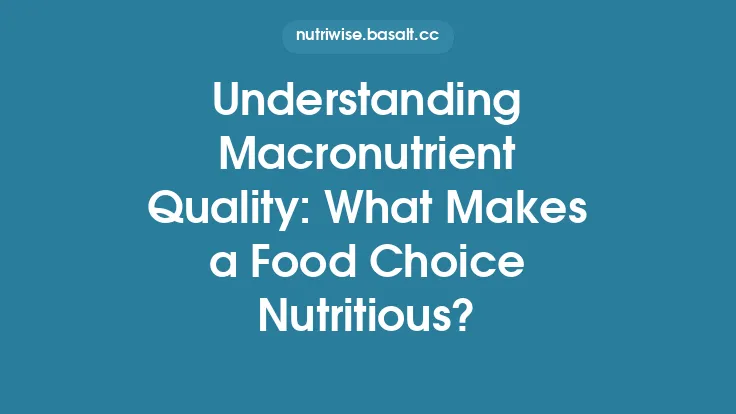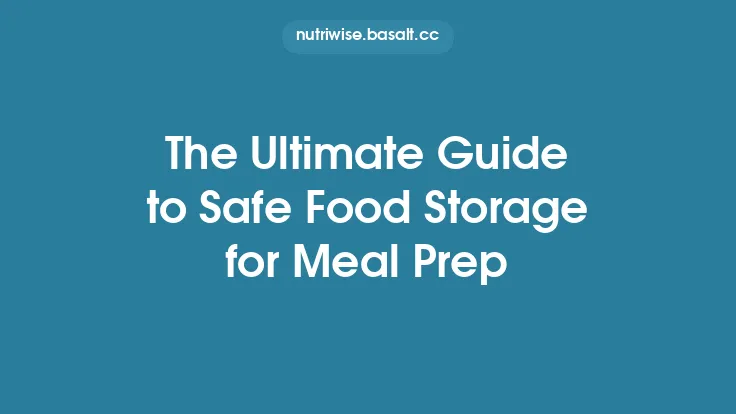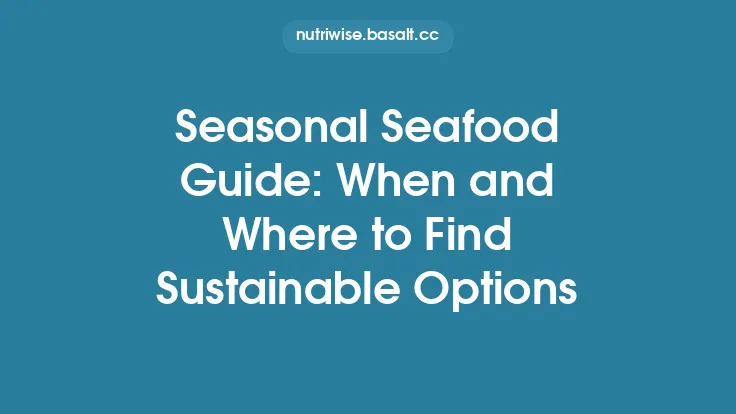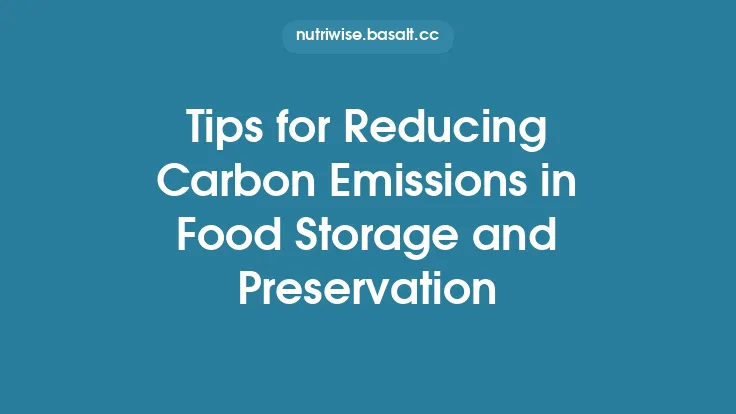When you glance at a package in the pantry or fridge, the printed date often becomes the deciding factor in whether you’ll eat it or toss it. Yet the meaning of those dates is far from straightforward, and relying on them alone can lead to unnecessary waste—or, worse, a food‑borne illness. Understanding what expiration dates really signify, how they are determined, and how to evaluate food safety beyond the printed label empowers you to make informed choices that protect health while reducing waste.
The Different Types of Date Labels and What They Mean
| Date Label | Legal Requirement | Typical Interpretation | Common Foods |
|---|---|---|---|
| Use‑By | Mandatory for highly perishable items (e.g., fresh meat, dairy, ready‑to‑eat salads) in many jurisdictions | Food should not be consumed after this date; safety cannot be guaranteed | Fresh poultry, sliced deli meats, pre‑packed salads |
| Best‑Before | Mandatory for most packaged foods (e.g., cereals, canned goods) | Indicates quality—flavor, texture, nutritional value may decline after this date, but safety is usually still intact if stored properly | Pasta, canned beans, dry spices |
| Sell‑By | Primarily for retailers to manage inventory | No direct consumer guidance; indicates when the product should be removed from shelves | Many grocery store items |
| Packaged On / Production Date | Often required for fresh produce or bakery items | Provides a reference point for calculating shelf life | Fresh bread, berries, bakery goods |
| Freeze‑By | Optional, used for frozen foods | Suggests optimal quality when frozen; safety remains if kept frozen continuously | Frozen vegetables, ice cream |
The exact definitions can vary by country. In the United States, the Food and Drug Administration (FDA) does not require most “best‑before” dates, leaving them to manufacturers. In the European Union, “use‑by” dates are legally binding for foods that could pose a health risk after a short period, while “best‑before” dates are advisory.
The Science Behind Food Spoilage
Microbial Growth
- Bacteria (e.g., *Salmonella, E. coli, Listeria*): Multiply rapidly in moist, protein‑rich environments at temperatures between 4 °C and 60 °C (the “danger zone”). Some produce toxins that are heat‑stable.
- Yeasts and Molds: Thrive on sugars and can cause off‑flavors, visible spoilage, and mycotoxin production. While many molds are harmless, some (e.g., *Aspergillus flavus*) produce aflatoxins.
Chemical Changes
- Oxidation: Fats become rancid, leading to off‑odors and potential formation of harmful peroxides.
- Enzymatic Activity: Enzymes naturally present in foods (e.g., polyphenol oxidase in apples) cause browning and texture loss.
- Moisture Migration: Water activity (a_w) influences both microbial growth and chemical reactions. Lower a_w (e.g., in dried fruits) slows spoilage.
Physical Deterioration
- Texture Softening: Breakdown of cell walls in fruits and vegetables.
- Color Shifts: Due to pigment degradation or oxidation.
- Gas Production: CO₂ from microbial metabolism can cause packaging to bloat.
Understanding these mechanisms clarifies why some foods remain safe well past their printed dates, while others become hazardous quickly.
Legal and Regulatory Frameworks
United States
- FDA: Oversees labeling for most foods; “use‑by” dates are required only for infant formula and certain high‑risk foods.
- USDA: Regulates meat, poultry, and egg products; mandates “use‑by” or “sell‑by” dates for many perishable items.
- State Variations: Some states have enacted “date labeling” laws that require clearer definitions for consumers.
European Union
- Regulation (EU) No 1169/2011: Requires “use‑by” dates for foods that are likely to pose a health risk after a short period, and “best‑before” dates for other foods.
- Member State Implementation: Each country may have additional guidance on interpretation.
Canada
- Food and Drugs Act: Similar to the EU, distinguishing “best‑before” (quality) from “use‑by” (safety) dates.
These regulations shape how manufacturers calculate shelf life, often based on accelerated shelf‑life testing (ASLT) that simulates months of storage in weeks.
Practical Ways to Assess Food Safety Beyond the Date
- Check the Storage Conditions
- Was the product kept at the recommended temperature? A refrigerated item left at room temperature for several hours may have accelerated spoilage, regardless of the date.
- Inspect Packaging Integrity
- Swollen cans, broken seals, or torn vacuum packs can indicate microbial activity or exposure to air.
- Use Sensory Evaluation
- Sight: Look for discoloration, mold, or unusual texture.
- Smell: Off‑odors (sour, rancid, fermented) often signal spoilage.
- Touch: Slimy or excessively soft surfaces can be a red flag.
- Apply the “Four‑Hour Rule” for Perishables
- If a perishable food has been in the danger zone for more than four hours total (cumulative), discard it even if the date is far away.
- Consider the Food’s Intrinsic Factors
- Low‑acid foods (pH > 4.6) are more prone to *Clostridium botulinum* growth when improperly stored. High‑acid foods (e.g., citrus) are generally safer.
- Leverage Simple Tests When Available
- pH Strips: For home‑canned goods, a pH < 4.6 indicates adequate acidity.
- Thermometers: Verify that refrigerators stay at ≤ 4 °C (40 °F) and freezers at ≤ ‑18 °C (0 °F).
Special Considerations for Different Food Categories
Fresh Produce
- Shelf Life Drivers: Respiration rate, ethylene production, and surface moisture.
- Safety Note: Even if a fruit looks fine, a “use‑by” date on pre‑cut salads should be respected because cutting exposes interior tissue to microbes.
Dairy and Eggs
- Lactose Fermentation: Leads to souring; a slight tang may be acceptable in cultured products (yogurt, kefir) but not in milk.
- Egg Safety: The “float test” (egg sinks in water) can indicate freshness, but a “use‑by” date is still the safest guide for raw eggs.
Meat, Poultry, and Seafood
- High‑Risk Category: Pathogen growth is rapid; “use‑by” dates are legally binding.
- Freezing Extension: Properly frozen meat can remain safe indefinitely, but quality degrades after 6–12 months for most cuts.
Canned and Shelf‑Stable Goods
- Botulism Risk: Swollen cans, leaking lids, or rust are warning signs. Even if the “best‑before” date is far away, compromised cans should be discarded.
- Quality Decline: Nutrient loss (e.g., vitamin C) and flavor changes may occur over years, but safety is usually maintained.
Baked Goods and Snacks
- Moisture Content: Determines susceptibility to mold. Low‑moisture items (crackers, dry cookies) can stay safe well beyond “best‑before” dates if kept dry.
- Stale vs. Spoiled: Staleness affects texture, not safety; however, any visible mold warrants disposal.
When to Trust Your Senses Over the Printed Date
- Visible Mold on Low‑Moisture Foods: Even if the “best‑before” date is months away, discard the item.
- Off‑Odors in High‑Acid Products: A sour smell in a sealed jar of pickles may indicate fermentation beyond intended levels.
- Texture Changes in Dairy: Curdling in milk that is still within the “best‑before” window suggests bacterial growth; discard.
- No Signs of Spoilage: If a “best‑before” date has passed but the product looks, smells, and tastes normal, it is generally safe to consume.
The key is to treat dates as a baseline rather than an absolute rule, especially for “best‑before” labels.
Managing Risk in the Home Kitchen
- Create a Date‑Tracking System
- Use a simple spreadsheet or a smartphone app to log purchase dates, expiration dates, and storage locations. This reduces reliance on memory and helps prioritize use.
- Adopt the “First‑In, First‑Out” (FIFO) Method
- Place newer items behind older ones on shelves and in the fridge. This practice naturally rotates stock without requiring elaborate planning.
- Maintain Consistent Refrigeration Temperatures
- Periodically check your fridge and freezer with a calibrated thermometer. Even a 2 °C deviation can shorten the safe window for perishable foods.
- Separate Raw and Ready‑to‑Eat Foods
- Prevent cross‑contamination that could accelerate spoilage of ready‑to‑eat items, making them unsafe before their printed dates.
- Educate Household Members
- Ensure everyone understands the difference between “use‑by” and “best‑before” and knows how to perform basic sensory checks.
Guidelines for Specific High‑Risk Foods
| Food | Critical Date Type | Safe Handling Tips |
|---|---|---|
| Fresh poultry | Use‑By (typically 1–2 days after purchase) | Store at ≤ 4 °C; cook to internal temperature ≥ 74 °C; discard if any off‑odor. |
| Raw ground meat | Use‑By (3–5 days refrigerated) | Keep sealed; avoid temperature abuse; freeze if not used within 2 days. |
| Soft cheeses (e.g., Brie, Camembert) | Use‑By (often 1 week after opening) | Keep refrigerated; discard if surface shows mold not typical for the cheese. |
| Pre‑cut fruit salads | Use‑By (often 3–5 days) | Store in airtight container; consume within 2 days after opening. |
| Canned low‑acid foods (e.g., beans, soups) | Best‑Before (2–5 years) | Inspect can integrity; discard if bulging, leaking, or rusted. |
| Shelf‑stable nut butters | Best‑Before (6–12 months) | Stir if oil separates; discard if rancid smell develops. |
The Role of Temperature and Storage Conditions
- Refrigeration (0–4 °C): Slows bacterial growth by up to 99 % for most pathogens.
- Freezing (≤ ‑18 °C): Halts microbial activity; however, some bacteria (e.g., *Listeria monocytogenes*) can survive and become active upon thawing.
- Room Temperature (20–25 °C): Ideal for many dry goods but accelerates spoilage in perishable items.
- Humidity Control: High humidity promotes mold on produce; low humidity can cause dehydration and quality loss in fresh items.
Investing in a temperature‑logging device for the fridge can provide alerts if temperatures drift, protecting both safety and quality.
Future Trends and Emerging Technologies
- Smart Packaging with Time‑Temperature Indicators (TTIs)
- Color‑changing labels that reflect cumulative temperature exposure, giving a more accurate safety picture than static dates.
- Predictive Shelf‑Life Modeling
- AI‑driven apps that combine purchase date, storage conditions, and product type to forecast remaining safe life.
- Edible Antimicrobial Coatings
- Natural extracts (e.g., chitosan, essential oils) applied to fresh produce to extend microbial stability, potentially shifting “use‑by” windows.
- Blockchain Traceability
- Transparent supply‑chain data that allows consumers to see the exact harvest, processing, and distribution timeline, enhancing confidence in date labels.
- Rapid On‑Site Testing Kits
- Portable devices that detect specific pathogens or spoilage metabolites, enabling real‑time safety verification at home.
These innovations aim to reduce reliance on conservative date labeling, thereby cutting waste while maintaining safety.
Bottom Line
Expiration dates are a valuable guide, but they are not the sole arbiter of food safety. By understanding the distinction between “use‑by” (safety) and “best‑before” (quality), recognizing the scientific factors that drive spoilage, and applying practical sensory and storage checks, you can confidently decide when food is still safe to eat. This nuanced approach not only protects your health but also contributes to a more sustainable food system by preventing unnecessary discarding of perfectly edible items.





